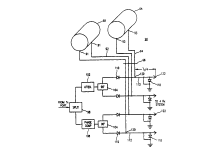 Medrad v. MRI Devices (Fed. Cir. 2005).
Medrad v. MRI Devices (Fed. Cir. 2005).
Medrad filed suit against MRI Devices for allegedly infringing Medrad’s patented radio frequency (RF) coils used in magnetic resonance imaging (MRI). The district court granted a partial summary judgment of invalidity after construing the claims of the patent.
On appeal, the CAFC struggled to give meaning to a claim that “itself provides little guidance.”
Interpreting the term “substantially uniform,” the court rejected Medrad’s argument that the “court may not look to how an invention functions in determining the meaning of claim terms” — finding that proposition “as unsound as it is sweeping.”
We cannot look at the ordinary meaning of the term . . . in a vacuum. Rather, we must look at the ordinary meaning in the context of the written description and the prosecution history. Quoting DeMarini Sport (Fed. Cir. 2001).
Basing its decision on (1) claim language, (2) the specification, and (3) expert testimony, the appellate court found that “substantially uniform” in reference to a magnetic field meant that the magnetic field is sufficiently uniform to obtain useful MRI images.
Affirmed.
PLI Hosting Free Webast “How To Get a Job in IP Law” on March 28
From Dennis Crouch’s Patent Blog, On March 28, 2005 from 1:00 – 2:00 PM Eastern Time, PLI is hosting a free- au